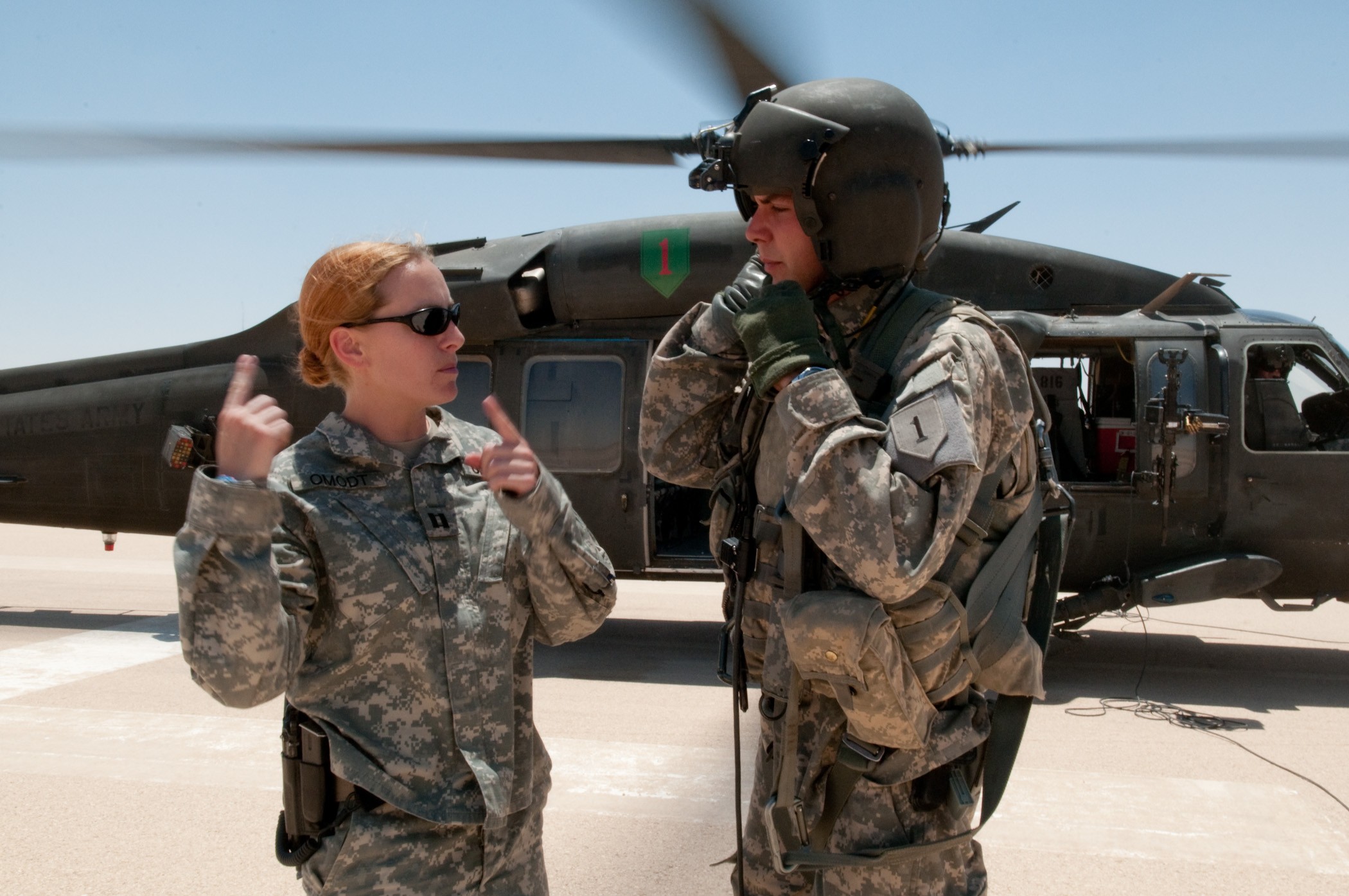AL ASAD AIR BASE, Iraq -- Two-wheel landings on snowy Afghan ridgetops are more exciting, but managing the exodus of a 4,000-strong brigade during the drawdown of U.S. forces in Iraq provides its own challenges for one desk-bound helicopter pilot with 82nd Airborne Division.
Capt. Catherine Omodt's job is to orchestrate the movements of incoming and outgoing personnel and equipment of two advise-and-assist brigades as they swap places in Iraq's expansive Al Anbar province for the end of Operation Iraqi Freedom and the beginning of Operation New Dawn.
As the officer in charge of Team PAX, Omodt provides command and control for the deployment of 4th Advise and Assist Brigade, 3rd Infantry Division, and the redeployment of her own unit to the United States; 1st Advise and Assist Brigade, 82nd Airborne Division.
The former 101st Airborne Division UH-60 Black Hawk pilot and current 1/82 AAB brigade aviation planner said that knowing the abilities of helicopters - how many people they can fit and how much cargo they can take - and the ability to advise Soldiers unfamiliar with the planning of the movements of large numbers of people are the most important skills she brings to her current role.
"In different times of the year, you can take more or less weight based on aircraft capabilities of heat, cold and other environmental and mechanical conditions," said Omodt.
"When 18 people show up with five bags each - you can fit 22 pax on a [flight of] Blackhawks - I have to tell them they're not going to get on with that equipment. Instead of having to call aviation, we have someone in the brigade that has that knowledge to be able to give realistic expectations."
As a freshman at Vanderbilt University in 1999, Omodt's future expectations included neither helicopters nor the Army.
With one sister working as an equestrian in Kentucky and the other heading off to interior design, Omodt set her sights on civil engineering. However, Vanderbilt's $35,000-a-year fees spurred Omodt to investigate the Reserve Officers Training Corps. By her sophomore year, the Army was paying for most of her education.
Five years later, she was flying Blackhawks in Iraq.
"Flying seemed like a fun way to spend my time in the Army," she said. Omodt had listed medical service as a secondary branch choice, but received her first, aviation.
"Some officers in medical service are also sent to flight school," she explained.
Omodt's first deployment was in September 2005 with 101st to FOB Speicher, a rotary-wing hub north of Baghdad, where she flew Black Hawks in general aviation support.
Two years later, she was at Bagram Airfield in Afghanistan, again in the cockpit.
"Flying in Afghanistan was awesome," she said. "I was there mostly in wintertime, and it was ranges upon ranges of mountains covered in snow. We could fly through passes and do two-wheel landings on top of ridgelines. It was both fun and beautiful."
With more than 770 hours of flight time, Omodt's third deployment landed her at a desk in Ramadi, Iraq, as 1/82 AAB's aviation planner. The job was far less glamorous, but equally important, she said.
Ironically, her husband Michael Omodt, a Black Hawk pilot deployed most of the year to Afghanistan with 3rd Battalion, 3rd Special Forces Group, was also bound to a desk doing aviation liaison.
"We commiserated," she said.
As the leader of a team of 11, she oversaw control of Anbar airspace at the lower altitudes where helicopters fly, paying particular attention to restricted operation zones and firing ranges. She coordinated everything from standard movement of passengers around the airspace to being the link between infantry companies and aviation during air assaults.
"What surprises people the most is that they can't always fly immediately," said Omodt. "For some types of aviation travel, they have to schedule days in advance, and they can't reserve seats," she said.
Knowing the ins and outs of the many different reservation systems for normal ring routes, special air movement requests, cargo flights, and fixed wing flights and who controlled them was how her team helped the most.
"For us, the biggest challenge was that the systems were constantly changing," she said.
In late June 2010, Omodt and Team Pax began operations in Al Asad, where they will remain until 1/82 AAB is fully removed from Anbar. The hours are long and the work is at times tedious, said Omodt, but good aviation logistical support saves time, expense and stress on Soldiers, and ultimately, it's what gets Soldiers back with their families.




Social Sharing